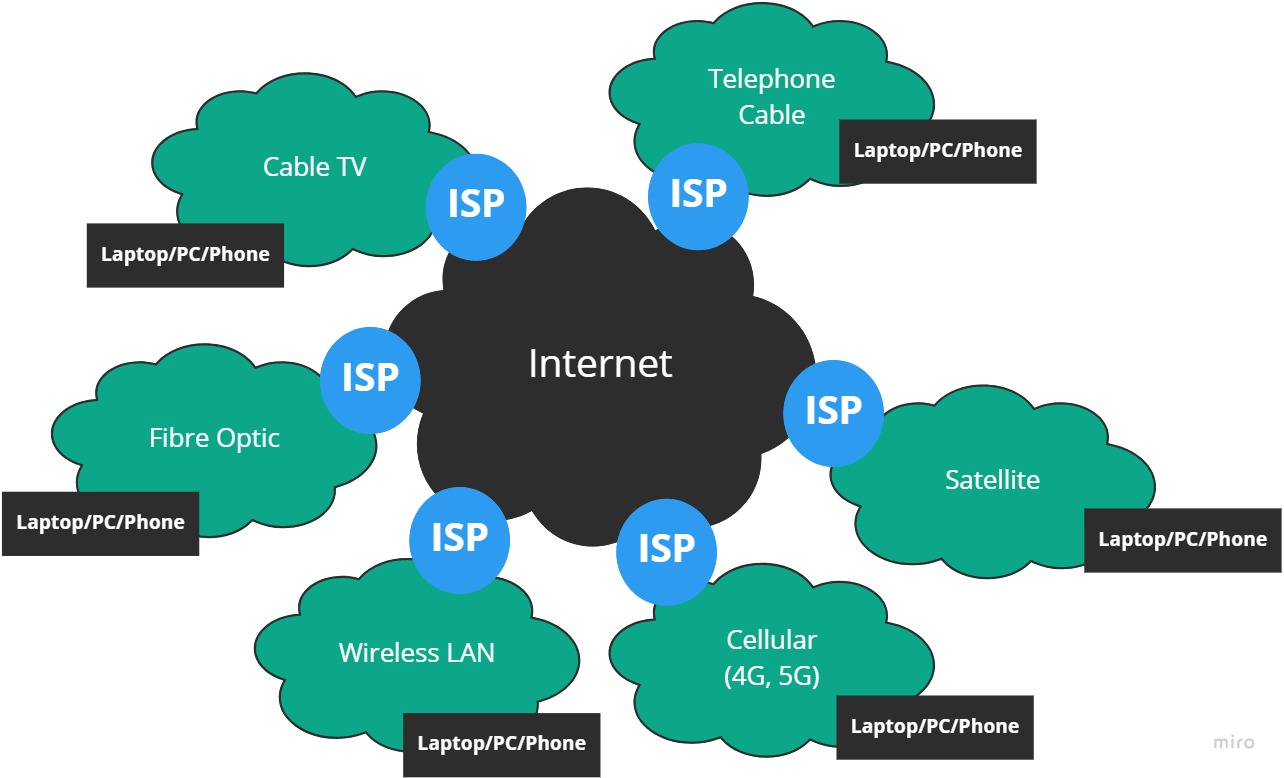Networking#
This is a subject that's very critical for you to understand. Without a solid fundamental knowledge of networking you're going to struggle to diagnose problems and implement even the most basic of solutions. Networking links everything together.
Put simply: what good is a database filled with millions of records of information if it cannot be accessed by anything? What good are the computers we have if we cannot network them together and talk to each other? You're reading these words because of networking, and now you're going to learn how that happens.
The Internet is a network of networks, essentially. At home you have a network called a Local Area Network (LAN). Computers on your LAN connect to other computers inside of other networks via your ISP, yet another network. I think we need to visualise this:


Here we can see how the different devices connect to the Internet, via their Internet Service Provider (ISP), using a variety of technologies. The most common one you'll find is the "Wireless LAN" and "Cellular". Note that they all go via an ISP to reach each other. When one system wants to talk to another over the Internet, via an ISP, they're essentially talking through a whole bunch of networks.
Here's a really cool visualisation of the entire Internet and its public networks/IPs:

This is why networking is an important topic. Without networking you wouldn't even be reading this book, because you're using a network, several in fact, to access it.
We're going to cover aspects of computer networking, all focused on protocols. The hardware side of things isn't overly important when your focus is to work in public Cloud computing because the Cloud provider (like AWS) takes care of the hardware for you.
All you have to worry about is provisioning higher level software abstractions and dealing with protocols, where a software abstraction is a layer that hides complexity from you. That's what Cloud is doing a lot of: abstracting away complex ideas behind easy-to-use web UIs and APIs. It's hiding details from you, so you don't have to worry about them. That's essentially what you're paying for.
Basic Concepts#
These are the concepts I highly recommend you study and understand before moving on to the advanced topics in this book.
Please do keep in mind that networking is a massive topic. I'm going to highlight the topics, below, that I feel you'll face on a (near) daily basis as you operate in a modern, Cloud or hybrid based environment. Even though I'm trying to help you take a "shortcut" using the 80/20 Principle the list is still big. Don't be put off by this! Take your time and work your way through the content.
- Switching
- Routing
- Addressing
- Protocols
- High Availability
Next#
Now we're going to look at (cyber) security and learn some important basics.